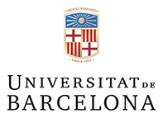
Multi-sensor remote sensing detection of biotic stress for crop phenotyping and management guidance
Yassine Hamdane
Abstract of the PhD Thesis
Abstract
The main driving force behind crop research is to ensure food security. Climate change, which affects most crops and increases the risk of disease and famine, is addressed in this notion. The Food and Agriculture Organization (FAO) and the United Nations (UN) share the objective of providing food security for all people on Earth and ending hunger globally. Using strategies like reducing crop losses, maintaining sustainable production, and increasing the area under agricultural cultivation, this objective can be achieved. Food production is significantly impacted by climate change, which is directly to blame for numerous abiotic pressures such as temperature increases, droughts, and soil salinity. Invasive pests, disease, and other biotic stressors are all examples of the second type of stress. Specific tools can be used to identify the various forms of stress and provide guidance for their treatment. Remote sensing appears in this setting as a non-destructive technology capable of recognizing and pinpointing stress-prone areas. The first investigations involve the cultivation of the four horticultural crops listed below in soil that has been contaminated with the nematode Meloidogyne incognita throughout a five-year period between 2016 and 2020. Two treatments were used: plants grafted onto resistant rootstock and non-grafted plants. The second involved assessing 40 new bread wheat accessions for the presence of a fungus; some of them received fungicide application, while the remainder was left untreated. The trial sites were located across Northern Spain at Tordómar, Elorz, Briviesca, Sos del Rey Católico, and Ejea de los Caballeros.
From the straightforward to the complex, from the destructive to the non-destructive, from the high-precision to the low-precision, and from the ground to aerial perspectives, measurements are taken using a variety of scientific equipment. For the destructive measurement revealed by the stable isotope analysis, such as δ13C and δ15N. The findings from stable isotopes showed interesting results in terms of the technique in explaining the plant status variation across the growing season. As, in the first study on nematodes, where the value of δ15N (x̄ =4.02) in melon in 2016 and (x̄=3.68, p<0.05) in pepper in non-grafted ones which means that grafted melon performed better than non-grafted ones and was characterized by better assimilation of nitrogen and low stress from the attack of nematode. In contrast, in the second study, the δ13C value varied from (x̄ =-26.00) in Elorz to (x̄=-27.08, (p<0.001) in Ejea de los Caballeros, which indicated less water stress in the second location. The Dualex and SPAD (Soil Plant Analysis Development) leaf sensor instruments also produced significant results that allowed researchers to distinguish between treatments, for example, where the value of flavonoids in the grafted plant was less than the non-grafted one or the value of Nitrogen Balance Index (NBI) in wheat treated by fungicide (Prosaro) (x̄=35.69) exceed their untreated one (x̄ =34.56, p<0.01) in the Elorz site in the second study. In the first and second studies, canopy instruments like the GreenSeeker NDVI (Normalized Difference Vegetation Index) and RGB cameras were used to measure the whole canopy or plot. These instruments vegetation indicators or indexes produced good results that allowed for a comparison of the two different experimental treatments. For example, the Triangular Greenness Index (TGI) in the grafted plant (x̄=2600, p<0.001) in melon 2016 whereas the non-grafted plant (x̄ =1880). The second study demonstrated similar results, with treated wheat having a higher Green Area (GA) index than untreated wheat at least time in May and June in each location (p<0.001). Furthermore, aerial measurements were made using a standard RGB camera integrated into an Unmanned Aerial Vehicle (UAV) and showed similar outcomes for the RGB indices, as evidenced by the highest correlation between the vegetation indices at the ground and aerial levels in the case of TGI (r=0.817). This, however, was not the case for the experimental aerial NDVI modified camera, where the ground Greenseeker NDV measurements made on Elorz 22 April (R2=0.700, p<0.001) had a better correlation with grain yield than the aerial measurements where he registered the best value at 12 May Tordómar (R2=0.231, p<0.001) made by the AgroCam GEO NDVI. In this sense, it is advisable to utilize a UAV for measuring RGB vegetation indices and the GreenSeeker for measuring the NDVI (or consider a better quality aerial NDVI sensor) due to the first’s advantages of quickly covering a larger area and the latter’s better results.
All of these tools, which operate at various levels, not only enable the identification of biotic stress but also demonstrate the importance of adopting smarter agricultural practices, such as grafting methods to safeguard horticultural crops from nematode aggression and the development of new varieties of fungal-resistant wheat or the careful application of fungicides. The use of intelligent crop production systems and management strategies is crucial for the sustainability of crop production as well as the security of food harvests.

